Beyond the Swatch
(2010)
I was awarded a PhD in Materials from the Division Engineering, King's College London.
The thesis, Beyond the Swatch, dealt with notions of material encounter and the relationship between materials, objects, form and function, within the context of building a materials library and asks, how can the science of materials be represented by the materials themselves. The work addresses the tyranny of the swatch and establishes new methodologies of isomorphic material-object creation, curation and experimentation. Extracts form the thesis, Beyond the Swatch, can be found below. If you would like to see, read or reference the full thesis, please contact me >>here<<.
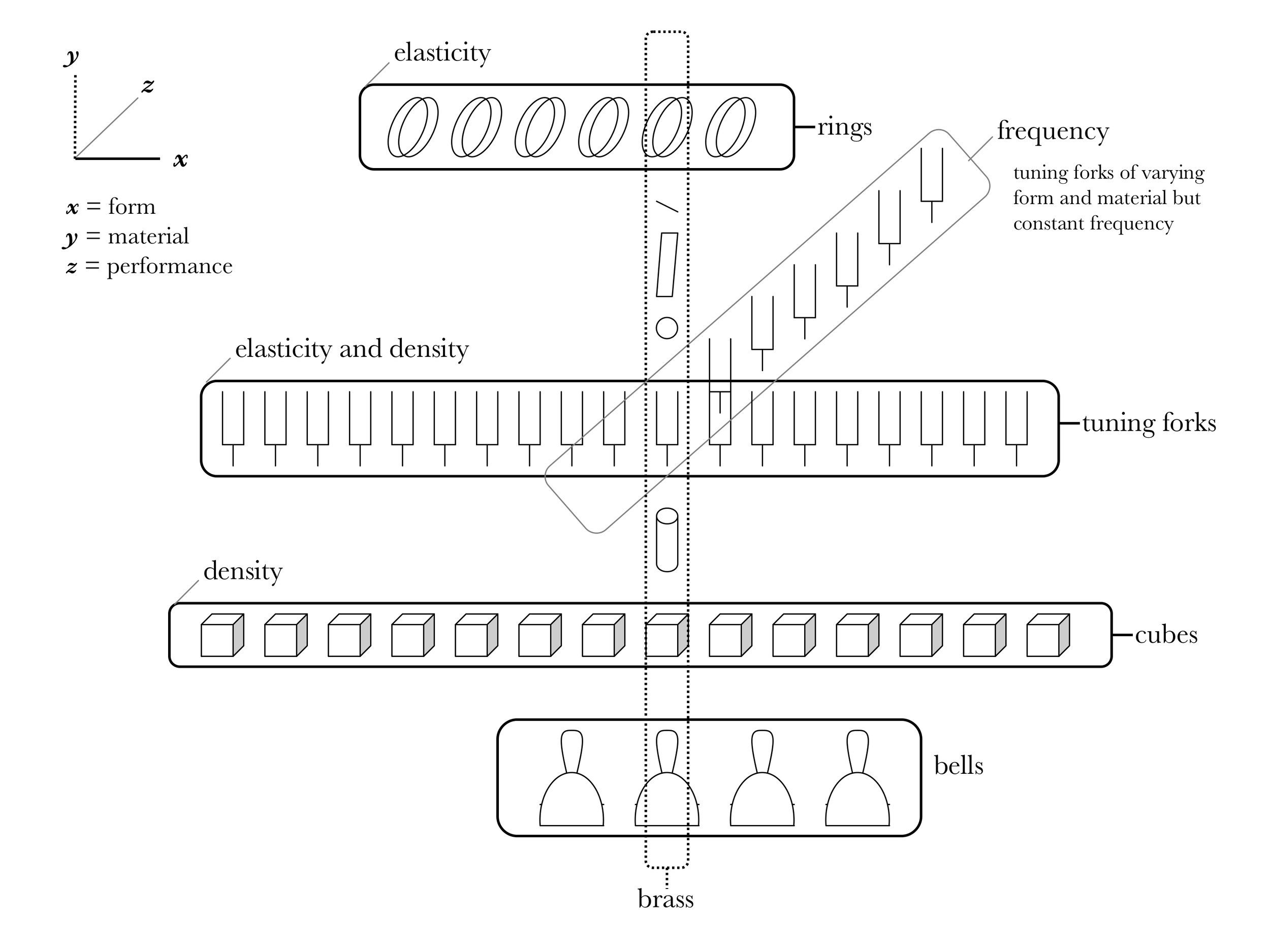

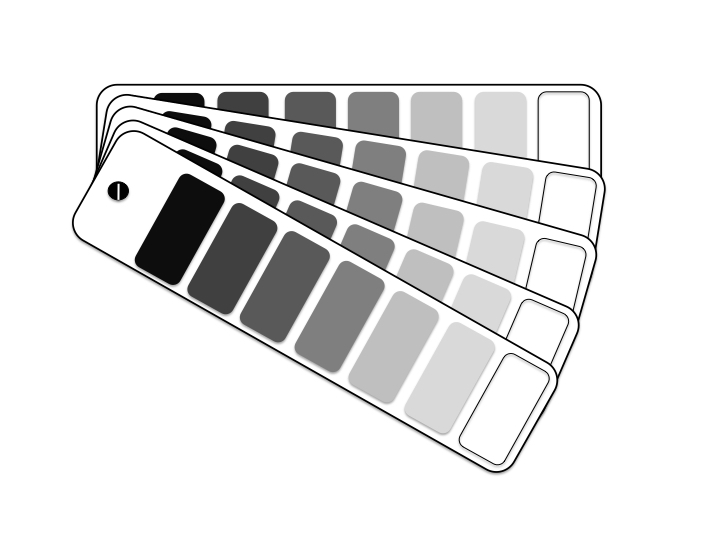
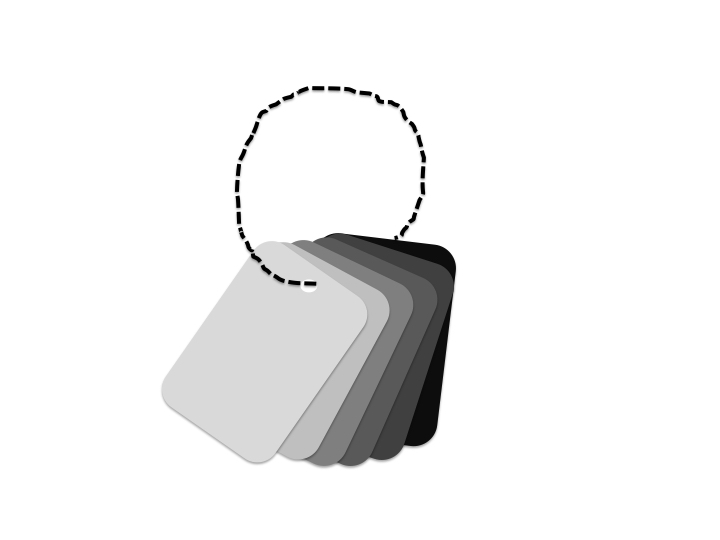
Abstract: This thesis investigates the potential of materials to represent their science within the context of a materials library. Materials scientists and engineers select materials using the concept of quantifiable physical properties and map materials accordingly. Within the arts communities, processes of materials selection often employ less quantifiable mechanisms, where cultural and sensory perceptions sit alongside more pragmatic technical requirements. The culture and sci- ence of materials are both expressed in the objects that surround us every day. Much of the content of materials libraries is a mixture of objects in the form of material products and samples. The work of this thesis introduces a theory of material-objects and an isomorphic methodology for material-object creation that explores the relationships between form, function and materi- ality. It does so in an attempt to re-evaluate the nature of the contents of materials libraries and endeavour to highlight the science of materials. The theory and method are tested in the mak- ing and use of four sets of experimental material-objects; cubes, tuning forks, bells and spoons. These four sets of isomorphic material-objects attempt to advance the paradigm of the materials swatch and push the boundaries of the genre to reveal the social, cultural, philosophical and scientific aspects of materials and their relationship to objects. Each material-object renders the micro structures and behaviours of materials as experiential macro properties. In doing so the social, sensual and performative agency of materials is presented. Material-objects are used in the staging of a series of events that constitute experiments with encounter. Instances of material encounter are vital for the exchange of materials knowledge and the revelation of properties. The results of the research into material-objects and encounter offer a novel way of approaching the creation and curation of a materials library, with particular attention given to the development of new forms of swatches.

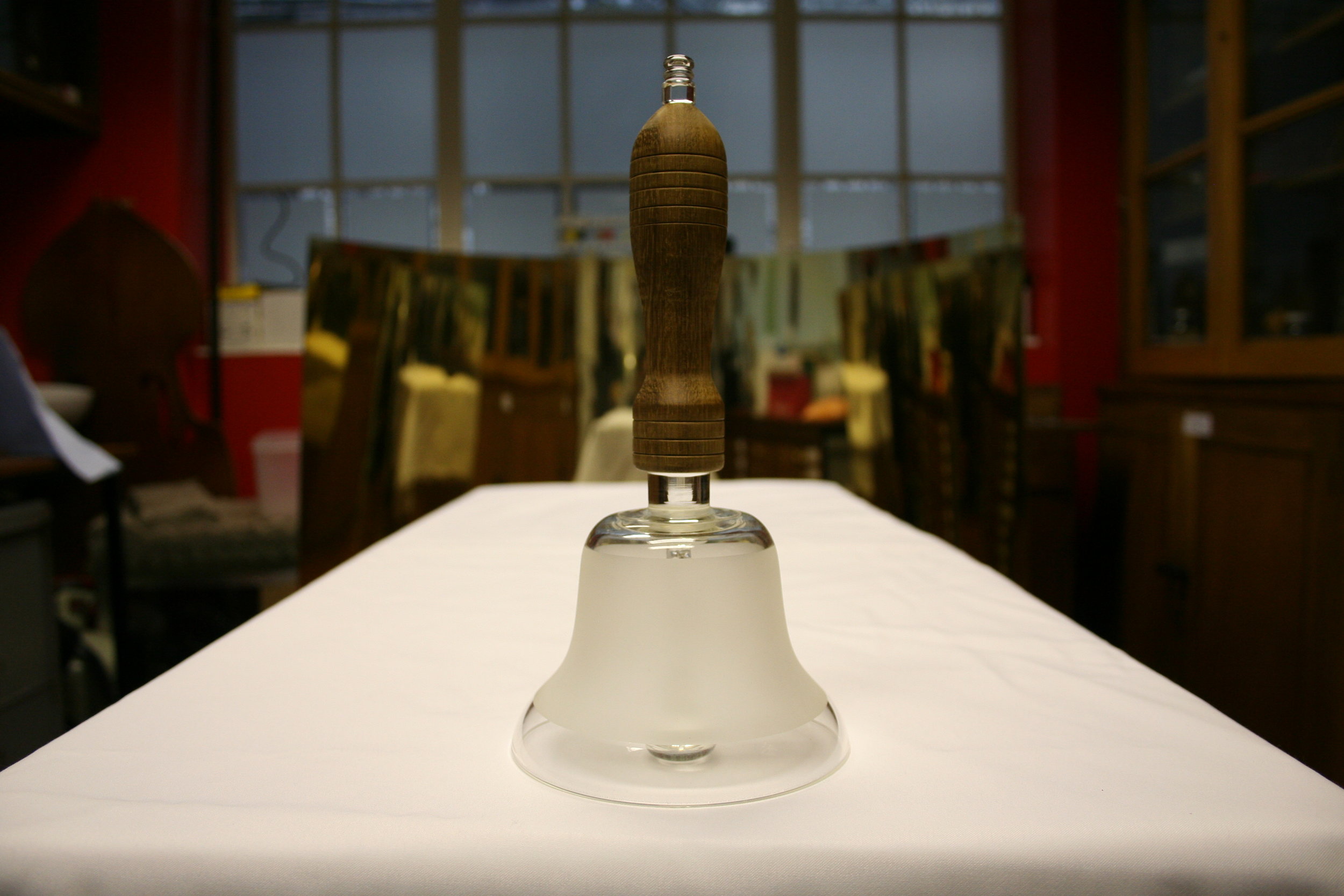
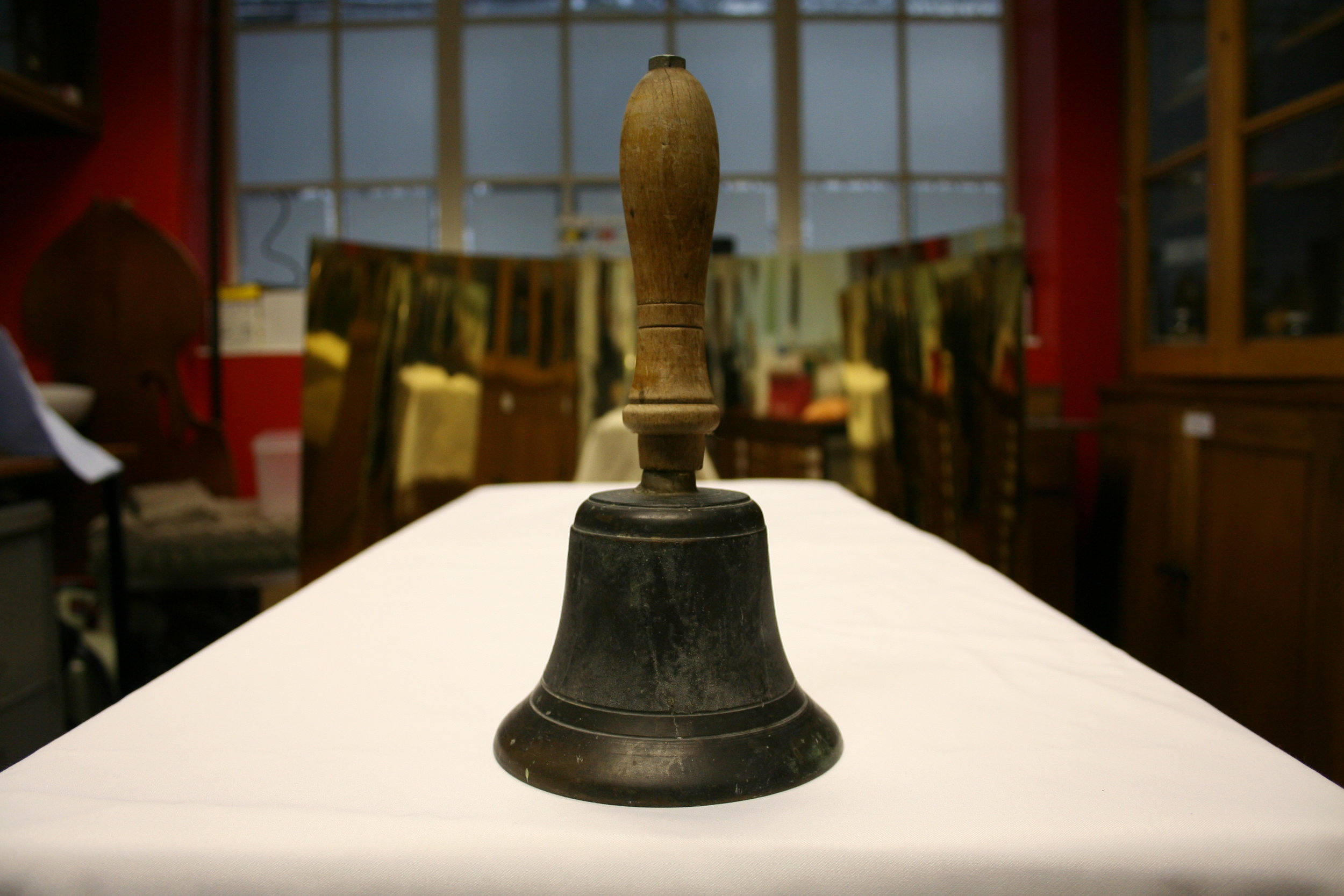
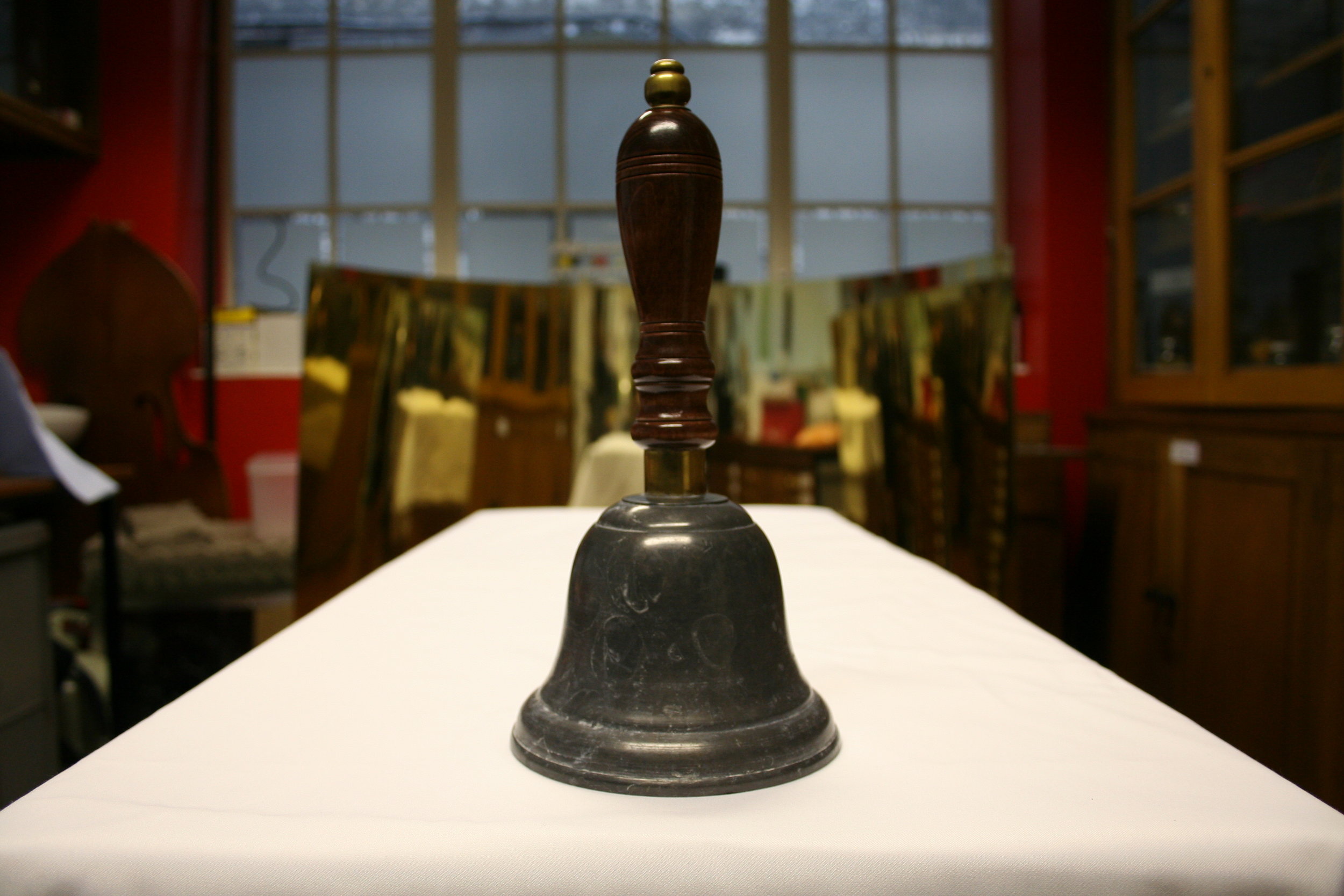
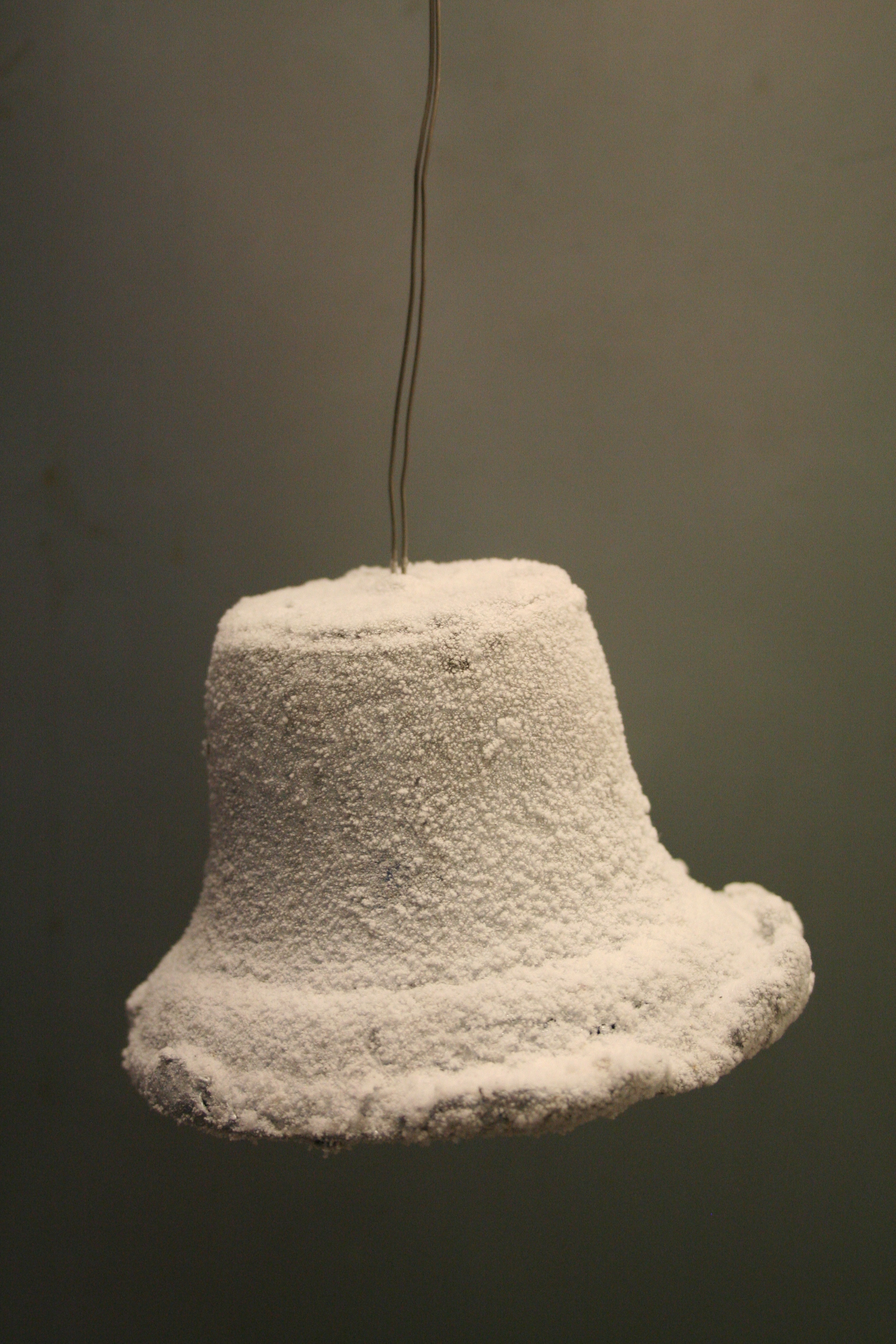
Bells, Chapter 7.
Brass, Glass, Bronze, Lead, Mercury.
Conclusions
1. The Material-Object Continuum as a Curatorial Tool for the Creation and Curation of a Materials Library.
The idea of a material-object continuum is a useful framework for the curation and creation of a materials library for it offers a nexus of possibilities that provide a way of perceiving similarities, differences and linkages between material-objects in relation to their form, function and materiality. The single axis of material and object provide the terrain for isomorphic exploration whilst the broader nexus of collective material-objects, that consti- tute a materials library, affords exploration of material-objects along the axis of functional, perceptual, cultural or scientific performance. Through mapping and generating material- objects that render physical plots on a material-object continuum, a collective of multiple taxonomies becomes possible. Such taxonomies were explored in this thesis through the curation of events and specific instances of conjecture.
2. Going Beyond the Swatch.
The presence of the swatch in the majority of materials libraries has shown to be central to their material display and part of the mechanisms of haptically based materials selection. The swatch is a synecdoche for a materials library, a part that stands for the whole, a mem- ber of the collective whilst simultaneously being a collective. This thesis has attempted to go beyond the standard trope of the swatch; to push, tweak, negotiate and pervert that which constitutes a swatch through the development and exploration of the isomorphic methodology. Sets of material-objects were made and used within the Materials Library and at events to explore specific aspects of materials science and its relationship to form and function of objects.
3. Materials Provoke the Exchange of Knowledge.
The importance of material encounter as the basis for the exchange of knowledge has been central to the work of this thesis for it recognises the potential for the physical coming together of people with materials to provoke an exchange of knowledge. The presence of the material acts as the focus of attention and a spring board for discussion, the mediating agency that acts as the thing in common between strangers as well as the object of reve- lation and demonstration. The importance of multi-sensory investigation was also shown throughout the experiments and in the enactment of the material-objects. The design of a material-object has been shown to influence that which can be communicated by it. If a material-object is very ‘objecty’ it may speak greatly of our cultural relationships to forms and functions at the expense of revealing its material properties, be these formally scientific or senso-aesthetic. The material-objects explored in this thesis have offered expe- rientially orientated encounters with the science of their materials alongside investigations into their senso-aesthetics.
4. The Role of The Expert.
The multiplicity of roles adopted by the ‘expert’ have been discussed in this thesis and shown to be paramount within the context of the Materials Library and in materials encounter, especially when considering the revelation of technical knowledge and narrative links. The expert is the magician who reveals and conceals the tricks and talents of the material-object and directs, delights and dazzles the audience. They are able to bring theory and practice together in the physical demonstration of their craft and display their expertise as a materials practitioner, for the benefit of those seeking materials knowledge.
5. Contribution to Knowledge.
The work of this thesis has contributed to the knowledge of a vast number of disciplines, both practical and academic. Since the establishment of the Materials Library, six new materials collections have opened around the world and specifically sought curatorial advice from the author (including the IOM3’s MRC featured in chapter 2). Conference organisers in the fields of Art, Design, Anthropology, Materials Culture, Geography, Ethnography, Archaeology and Performance Studies have all invited the author to present her work (see Appendix A). The work has also been presented to materials science communities in the form of conference presentations, proceedings and posters (listed in Appendix A). A peer reviewed paper on the Taste of Materials has been submitted for publication to The Journal of Food Preference and Quality. Public talks, performances, exhibitions and events (also listed in Appendix A) have also seen the work of this thesis disseminated in the pubic domain. As a resource, the Materials Library has been of use, interest and inspiration to hundreds of partitioners from a wide range of professions. In recognition of this, the Materials Library has recently been awarded a grant of £250,000 from the Leverhulme Trust (ref: F/07 040/AF) in order to bring together communities interested in materials for the sharing, exploration and advancement of material-based knowledge.
6. Future Work.
As a result of the Leverhulme grant and the standing of the Materials Library project within King’s College London (recognised as an entirety with a successful track record in public engagement), the Materials Library will be moving into the newly purchased East Wing of Somerset House in the autumn of 2011. The area allocated to the Materials Library is ten times bigger than its current home and will be tailored to the needs of the materials and activities it will host. Within this new setting, and with regard to future work in general, there is vast scope for the exploration of the isomorphic methodology in relation to the creation of new sets of material-objects. Such sets would explore the nexus of material-objects and enable a greater exploration of the notion of the material-object continuum. Sets that explore the axis of function/performance would be particularly in- teresting to explore in order to investigate and demonstrate the effect of materiality on the function of objects. Expanding the current sets of material-objects presented in this thesis is another avenue for future work; more cubes, tuning forks or a wooden bell, for example, would expand the nexus of material-objects present within the Library collec- tion. Further experiments could be conducted with the material-objects. The spoons, for example, could be used to determine the effect materials may have in relation to the taste of specific foods. Future work could also be done in the field of ethnography in relation to the use and understanding of material evidence as an indication of human interactions with objects and a signifier of specific behaviours. To this end a forensic ethnography could be proposed to apply quantifiable scientific data to qualitative issues of interaction. And finally, it is clear that more work could be done to study and critique the rapidly expanding world of materials libraries, a topic that warrants interdisciplinary analysis.
Beyond the Swatch © Zoe Laughlin, 2010.
Beyond the Swatch © Zoe Laughlin, 2010.

